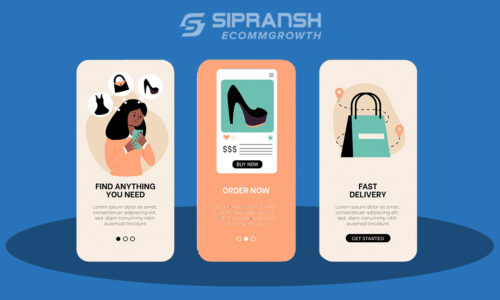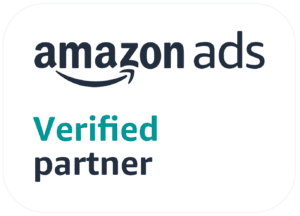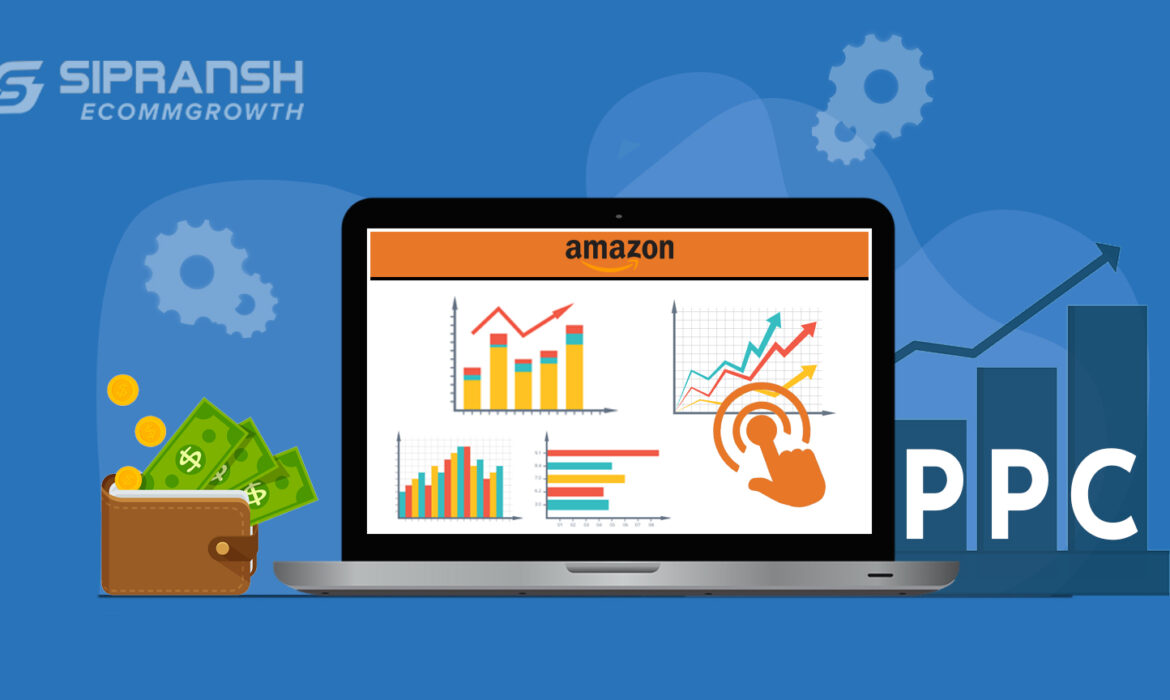
A strong Amazon PPC management approach is essential if you want to succeed on Amazon in 2023 and beyond. Amazon’s internal advertising system includes pay-per-click (PPC) advertising. Brands, agencies, and independent sellers can use Amazon PPC to target particular keywords when creating product adverts that show up in both Amazon’s search results and those of rival retailers. Sellers may then track the effectiveness of their advertising to determine which particular ads are generating conversions and show relevant products to Amazon buyers who are ready to buy at the moment of sale. Three out of four Amazon merchants of all kinds and sizes use this incredibly effective marketing strategy.
Learn more about advertising in our blog – Why Amazon Sellers Need to Do Advertising? and Top Reasons Why Your Amazon Ad Campaigns Stop Working.
What Is Amazon PPC?
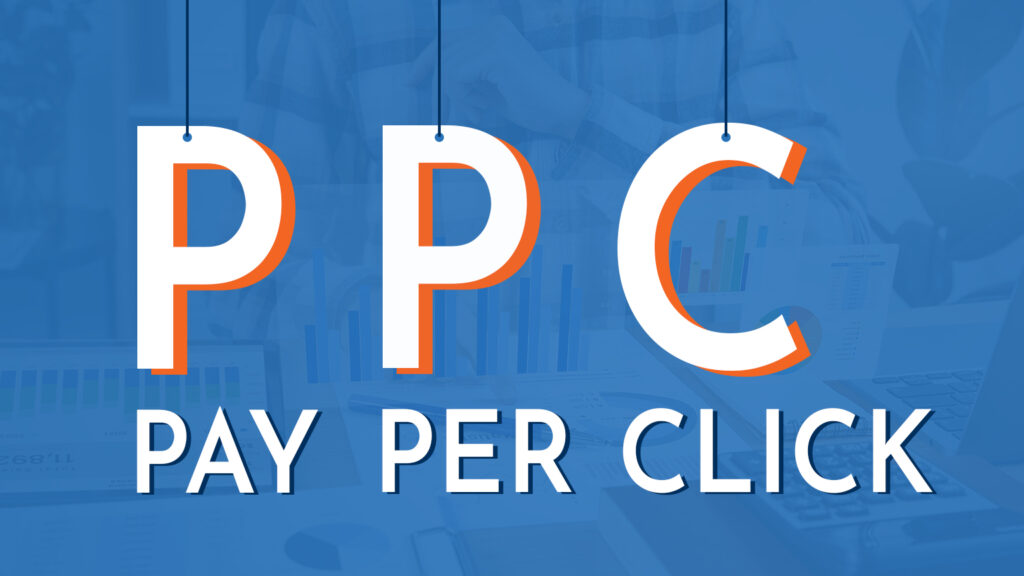
Amazon PPC (Pay-Per-Click) is a type of advertising service offered by Amazon for sellers and vendors to promote their products on the Amazon marketplace. It allows sellers to create ads that are displayed to customers when they search for a specific product or browse through relevant product categories.
With Amazon PPC, sellers pay only when a customer clicks on their ad, hence the name pay-per-click. The cost of each click is determined by an auction system where sellers bid on keywords that they want their ads to appear for. The highest bidder for a particular keyword will have their ad displayed first, followed by the second-highest bidder, and so on. Amazon PPC ads can appear in various locations on Amazon, including search results pages, product detail pages, and even off-Amazon websites and apps. The success of an Amazon PPC campaign is measured by its conversion rate and return on ad spend (ROAS).
Why Is PPC Important For Amazon Sellers?
PPC (pay-per-click) advertising is important for Amazon sellers for several reasons:
1. Increased visibility: Amazon PPC allows sellers to bid on keywords relevant to their products, which helps to increase their visibility in search results. This can be particularly important for new or lesser-known sellers who may struggle to rank organically in search results.
2. Targeted advertising: Amazon PPC allows sellers to target specific audiences based on factors such as keywords, interests, and shopping behavior. This helps to ensure that ads are shown to the most relevant potential customers, which can improve the chances of making a sale.
3. Cost-effective: Amazon PPC is a cost-effective way to advertise, as sellers only pay when someone clicks on their ad. This means that they can control their advertising spend and ensure that their budget is being used effectively.
4. Data-driven optimization: Amazon PPC provides valuable data on ad performance, including click-through rates, conversion rates, and cost per click. This data can be used to optimize ads and improve overall campaign performance.
5. Competitive advantage: Amazon is a highly competitive marketplace, and PPC advertising can give sellers a competitive advantage by helping them stand out from their competitors and reach more potential customers.
How To Create An Effective Amazon PPC Strategy
Step 1: Choose the goal of your campaign as the first step. Your campaigns might all have distinct goals. Some of them can be geared towards enhancing brand recognition, while others can just be concentrated on enhancing your sales.
Step 2: Conduct in-depth keyword research based on the goals of your campaign. When running a campaign to raise brand recognition, your keywords should be connected to your company, and when promoting a new product, you’ll need to conduct extensive keyword research to identify the most popular search phrases people use to find your product.
Step 3: Pick the campaign type, once more based on the goal of your campaign. Choose Sponsored Display campaigns if retargeting is your goal, and Sponsored Brand campaigns if brand recognition is your goal.
Step 4: Determine your budget and bid amounts, add keywords, and then wait at least a week before making any changes to the campaign.
Step 5: Make adjustments to your campaigns using ad reports. When you don’t see the desired outcomes from your campaign, keep reviewing and making changes.
Choosing Which Type Of Amazon PPC Ad Is Right For Your Business
Amazon gives sellers access to a variety of PPC ad kinds with flexible targeting options. We advise you to experiment with all of the ad kinds you have access to when getting started, particularly automatic targeting advertisements and manually targeting Sponsored Products ads. You can best determine what kinds of phrases and search terms you should target on Amazon using these two ad formats.
All of your PPC options are covered below. But first, especially when working with a limited ad budget, it can be beneficial to think about your plan in terms of your expected return on ad spend (RoAS). To put it another way, you should think about how much money you’ll make from sales for every dollar you spend on advertising.

A higher RoAS is produced by some ad types and methods than by others. Running Sponsored Brand advertising, for instance, as well as close and loose match keyword targeting techniques, provide the greatest sales out of all PPC ad types. Of course, optimizing PPC ads requires time and practice, and results may vary from person to person. However, having a general idea of the return on investment might help you make judgments.
Finding the precise PPC approach that will help your brand the most can be challenging at first; among SMB sellers, managing PPC bids is one of the most prevalent problems. You can determine what works and what doesn’t for you by experimenting with each sort of advertisement. Once you have enough information, you can eliminate any advertising you feel isn’t doing effectively while boosting the ones that are.
A Robust Advertising Strategy Using PPC Ad Campaigns
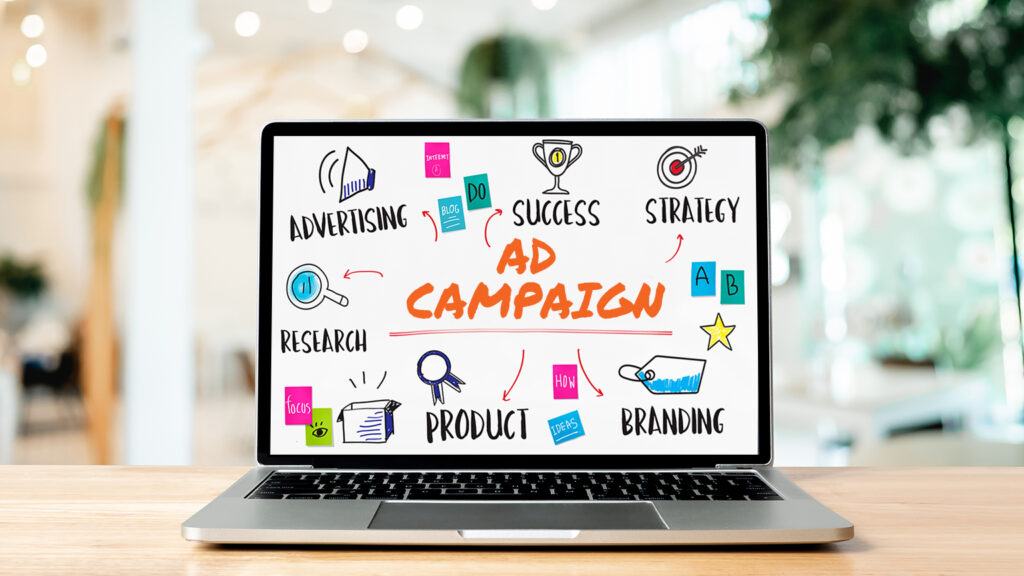
The majority of Amazon merchants we work with (around 90%) start their PPC ads without establishing a goal first. You can’t just toss a bunch of keywords in, set your bids, and hope the ads are successful. Your campaign goal will determine the keywords you add, the bids you place, and the budget you provide. A campaign’s success is also largely a matter of opinion. If your objective is brand awareness, you might not give a damn about the elevated ACOS because all that matters is the exposure and reach of your advertisements. You may get a general idea of the kinds of Amazon Sponsored Ad campaigns you can develop based on your purpose by reading this fast tutorial.
1. Research Campaign
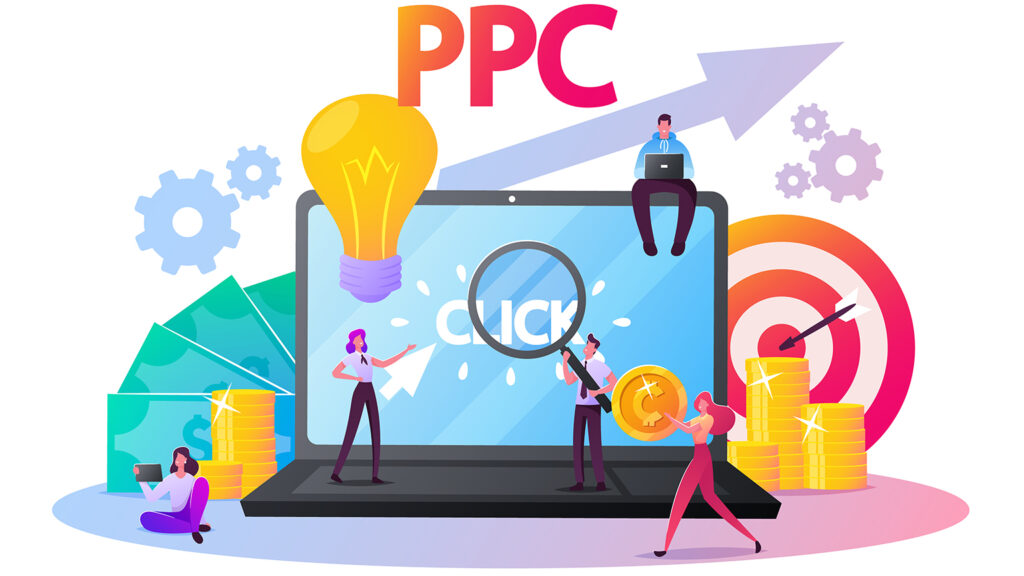
The best way to locate new keywords and search terms consumers are using to find your products is through these campaigns. As Amazon’s algorithm and customer behavior change, these campaigns assist you in staying current with the newest trend keywords. Typically, your research effort should be automated so that you may download search term terms each week and secure valuable keywords that Amazon believes will perform well for you.
2. Money Making Campaign
As the name implies, these campaigns will be your most successful ones since they will contain both your best-selling items and their top-converting keywords. By investing in these kinds of ads, you can improve your organic ranking for a particular keyword.
3. Competitor Targeting Campaign
These campaigns ought to incorporate terms that reference your rival’s company name. If you offer Levi jeans, for instance, you should target keywords like “Wrangler jeans,” “Pepe jeans,” etc. To encourage clients to select you over your rivals, make sure the product you’re selling is priced lower than those of your competitors.
4. Brand Protection Campaign
These initiatives are designed to safeguard your market share and prevent third parties from utilizing your brand name to make purchases. When sales start to pick up steam and the organic ranking starts to rise, advertisers can start developing brand protection efforts. All of your brand’s products and all of the keywords that contain your brand name will be included in brand protection campaigns.
5. Protective Targeting Campaign
Although they are standard product targeting campaigns, you use them to focus on your ASINs. This prevents your rivals from luring customers away from your listing. By using these tactics, you can maximize the space on the product detail page and even provide customers the option to examine additional items from your catalog.
6. Seasonal Push Campaign
These campaigns should be developed and launched to advertise seasonal goods. Run these campaigns before the festival or holiday to reach customers who are in the holiday shopping mood. Sponsored Brand advertising campaigns perform best because you may entice customers with a unique image and phrase. Before Valentine’s Day, Mother’s Day, Father’s Day, Halloween, Back to school, and other holidays, use seasonal push campaigns. Seasonal advertising campaigns can also be used to exhaust the stock of seasonal goods.
7. Product Launch Campaign
PPC is essential for raising awareness of recently introduced products. These campaigns assist you in resolving the issue of not ranking during the initial stages of a product launch. You should bid more aggressively for advertisements launching new products. You should be prepared to operate at the break-even point and even accept high ACOS during the early days, so keep that in mind. Utilise product targeting and place your advertisements on the detail page for one of your well-liked products. Advertising on the detail pages of your well-known products can accomplish two things:
(1) Customers who are already engaged in your brand will notice your newly introduced product.
(2) if the product you are targeting has a lot of reviews, it will act as social proof for the new product.
8. Brand Awareness Campaign
The awareness of your brand should be increased or strengthened throughout this campaign. To retain brand memory, large and medium-sized brands should run brand awareness efforts regularly. To determine whether or not their ads are reaching new customers, advertisers might use new-to-brand analytics. Campaigns for brand recognition should use competitive keywords and high bids. Increased visibility and reach of your adverts should be the sole objective of brand awareness initiatives.
9. Retargeting Campaigns
Use Sponsored Ads Display advertising to retarget previous visitors who are more likely to convert rather than attempting to draw in new people who may or may not convert. Depending on the targeting option you select, these ads may appear on the product detail page or on websites and apps operated by third parties. You can retarget customers who have already visited your detail page with Sponsored Display Ads, target customers based on their interests and purchasing patterns, or target competitor products and categories. Despite being introduced in 2019, just 25% of third-party sellers employ Sponsored Display Ads, making them one of the least valued and underutilized forms of advertising.
10 Most Common Amazon PPC Myths
Pay-per-click ads are one of the most frequently used and misunderstood technologies on Amazon. Each seller is aware of it and employs it, but only a select few are adept at doing so. PPC is the subject of countless myths that have developed from misinformation. When their promotions fail, sellers follow them mindlessly and ask what went wrong. The ten most pervasive myths gathered about Amazon PPC are exposed in this week’s blog post. Learn about them and remain clear about them.
1. PPC Plays a Major Role in Improving Organic Ranking
This used to be partially true. PPC was one of the most important factors in boosting the organic ranking for the main keyword in Amazon’s previous algorithm, A9, at the time. However, the improved algorithm A10 assigns less weight to sales derived from PPC and more weight to product relevancy. PPC is still relevant, but not in the same way. Amazon has finally realized that not everyone purchases things just because they keep seeing them. Therefore, Amazon believes that it would be better if the “most deserving and relevant” listing won rather than advertising ordinary products and giving them a sought-after spot in the first line of search results.
Fact: Increasing your organic ranking using PPC is not the main factor. Advertising should be utilized to generate buzz right away rather than as a long-term fix.
2. The Top Spot Is The Most Valuable Position
Once more, this is not accurate. Your ad will receive the most visibility and traffic by being in the top spot. But improved conversion isn’t usually a result of it. You may end up spending more than you make. As a result, the ACOS will be very high. The majority of customers tend to click on items in the first row of the SERP, but that doesn’t always guarantee they will make a purchase. Being first can be quite beneficial if your advertising objective is to raise brand awareness. otherwise, not. However, similar to the majority of PPC advertisers, if you want to maximize conversion, you should exercise a little caution when ranking first.
Fact: We shouldn’t constantly aim for the top spot. Try different positions to see which one suits you the best.
3. PPC Is Something You Set & Forget
Choose a product, include keywords, create campaigns, and then watch for results. Doesn’t PPC appear to be quite simple? No! You MUST analyze and tweak your PPC campaigns every single day if you want to get the most out of every marketing dollar you spend. Ad positions and search patterns vary often, and if you don’t modify your campaigns to reflect these changes, you risk wasting your valuable advertising investment. KPIs including expenditure, budget, clicks, ACOS, and sales must be monitored and optimized daily for PPC campaigns to be profitable. PPC is, in essence, a process that you must manage continuously and continuously till you sell on Amazon.
Fact: PPC cannot ever be something you set and forget about. You can only automate your PPC campaigns by working with knowledgeable PPC specialists.
4. Only Thorough Keyword Research Is Included In PPC Preparation
My PPC campaigns are loaded with the most lucrative and popular keywords; they will undoubtedly be successful. Yes, your detail page may receive a tonne of traffic if your campaigns include successful keywords, but that traffic won’t ever result in sales. Thus, no sales and only spending. A customer will leave your detail page if it does not provide him with the details he needs to make a purchase. As a result, optimizing your product text, producing educational graphics, determining whether or not your product has a Buy Box, and ensuring that your product has shining five-star ratings are the first and main steps even before beginning your PPC ads. Bottom line: Until and unless your product description page is retail-ready, none of your PPC methods or keyword research will be successful. Otherwise, the “great keyword research” traffic you are delivering is pointless.
Fact: Invest in getting your product description page ready for visitors before investing hundreds of dollars in PPC to drive traffic to your listing.
5. PPC Costs Far Too Much
PPC is quite pricey, but it can be customized to meet your specific goals and budget. You can first lose money and discover that PPC costs considerably more than you anticipated, but you must have patience. Always set a limit on your expenditures so that, barring any modifications to your plan, you can lessen the likelihood of going over budget. By routinely changing the offers, you can further reduce your spending. You can pause a keyword or lower its bid if it is using up too much of your cash. PPC also gives you the option to target particular goods and keyphrases to increase the effectiveness of your ads. Consequently, you are in total control of your
6. Keyword Density Increases Sales
This is not accurate at all. Not all keywords will result in sales; only relevant keywords will. More impressions, clicks, and traffic may result from using more and more keywords, but it does not necessarily translate into more sales. Not simply impressions and visitors should be the aim of your PPC campaigns, but conversions as well. Filter your keywords based on relevance rather than cramming your PPC ads to the brim with all of your available keywords. Overstuffing will result in irrelevant traffic, budget exhaustion, and an unacceptable ROI. Monitor the progress of your keywords daily and change the bids. Using top-notch tools, we identify the most valuable keywords. I promise that advertisements created using these keywords will produce considerably better outcomes.
Fact: Better conversion and more sales will result from using relevant keywords.
7. I Don’t Need PPC Because My Product Ranks On Page 1 Organically
A higher organic position is excellent, but PPC can help you achieve two times as much when it comes to keeping your product at the forefront of customers’ minds. Some sellers think that PPC and organic efforts compete with one another, but in practice, they both perform best when utilized in tandem. Brand awareness and traffic may rise as a result of the enhanced visibility. Yes, we wholeheartedly concur that free is undoubtedly preferable to paid, but PPC’s significance and advantages cannot be disregarded. Advertisers need to be careful that their company does not rely solely on PPC at the same time.
Fact: Combining paid and organic efforts yield the best results. PPC can help you rank highly for a wider variety of keywords and increase audience awareness.
8. Campaign profitability is evaluated by ACOS
ACOS either fails to convey the complete story or fails to speak the truth. Most retailers utilize ACOS (PPC Spend/PPC Sales) to calculate the profitability of their advertising programs. However, ACOS only depicts one perspective. PPC spending on Amazon is directly related to organic sales. It’s a red flag for you if your PPC sales are outpacing your organic sales. PPC ought should spread like wildfire. It ought to result in organic sales and brand exposure over time. If you are only using your ACOS, you are substantially harming the performance of your campaign. The overall ROAS (total organic sales minus PPC spend) and TACOS (advertising spend divided by total revenue) should also be included. Both TACOS and ROAS will show you how PPC influences your organic ranking by tracking the organic sales generated by your PPC campaigns. The key takeaway from this is to make sure that your PPC sales are not your company’s primary revenue stream but rather a supplemental one.
Fact: ACOS is significant, but it shouldn’t serve as your primary statistic. Do take into account additional factors like overall ROAS and TACOS.
9. All About Bid Amount
When someone clicks on an ad with a bid of $1, it’s not always required that the full cash will be taken away. Your maximum willing payment is based on your advertising bid. You will be required to pay a sum that is somewhat more than the amount set by the first runner-up if your bid is competitive enough, your advertisement is displayed in the search results, and a customer clicks on the advertisement. Therefore, it’s usually preferable to place a slightly larger price on the pertinent and crucial keywords. Therefore, it’s usually preferable to place a slightly larger price on the pertinent and crucial keywords. By doing this, you may not even have to pay that much to obtain the highly sought-after position in the search result pages. When it comes to Amazon PPC, it is true to say that chess is preferable to checkers. PPC is a game after all, so taking certain risks is OK.
Fact: A greater bid does not always equate to higher expenditure.
10. I Can Handle PPC On My Own
PPC requires effort, knowledge, and time. It is not something you can set and forget, as was previously said. To be profitable, it requires daily nurturing and fine-tuning. You might not be able to perform anything perfectly if you handle every aspect of your Amazon account on your own. Because of this, shrewd merchants use PPC Management from a reputable Amazon agency like eStore Factory that employs PPC specialists. Just let us know what your advertising budget, sales goal, and target ACOS are. Our PPC management services include every aspect of PPC administration, from micro-level campaign creation and management to keyword research.
How SIPRANSH ECOMMGROWTH Can Help Sellers With Amazon PPC (Pay-Per-Click) Advertising?
1. Keyword Research: Sipransh agency conducts thorough research on the keywords relevant to the seller’s products. This involves identifying the search terms that consumers use to find similar products and then selecting the ones that are most likely to result in sales.
2. Campaign Management: Our agency sets up and manages the seller’s Amazon PPC campaigns, including creating ads, setting budgets, monitoring performance, and optimizing campaigns for better results. We help sellers to maximize their advertising spend and achieve a better return on investment.
3. Ad Copywriting: Our team of experts writes effective ad copy that attracts customers and encourages them to click on the seller’s ads. This involves crafting compelling headlines, descriptions, and calls to action that is optimized for the seller’s target audience.
4. A/B Testing: Our team conducts A/B testing to compare different ad variations and determine which ones perform best. We optimize their ads and improve their overall campaign performance.
5. Reporting & Analysis: We provided regular reports and analyses of the seller’s Amazon PPC campaigns which helps the seller to understand their advertising performance, identify areas for improvement, and make data-driven decisions to optimize their campaigns.



